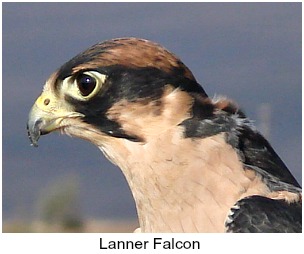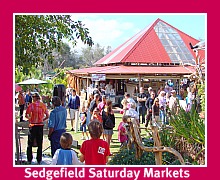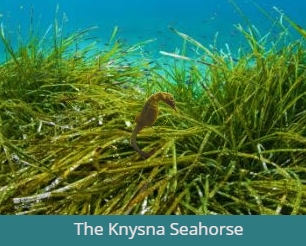Biomimicry
Copying the genius of nature
The heart of Biomimicry is about “imitating nature”. It’s about discovering a whole new way of valuing the natural world and finding that nature has been doing everything we have ever desired to do – build, design, manufacture, waterproof, harness energy - you name it, and has done it for some 3.8 billion years without ever having guzzled fossil fuel, polluted the planet or jeopardized its future and what is flourishing on Earth today are it's best ideas. A good many of the earth's 30 million creatures presently on the planet have survived all manner of challenges by being able evolve effective strategies allowing them to adapt to changing environmental circumstances.
“Humanity is seeing that we are one part of 1 trillion species but to our detriment we have acted as though we are the only
part. Instead of having only one vote, we have had the only vote."
Sue Swain -
Biowise
Throughout time mankind has learned how to do many things by observing nature. Now there is a realisation that through the medium of biomimicry, nature can teach us to find innovative and sustainable ways of living and doing and taking care of our health.

Just think of an indigenous forest and how all the myriad of organisms live and work together, cooperating to ensure the health of the system and thereby the long-term survival of all. e.g. How does a tree pump water from the basement to the penthouse?
How does a spider spin a silk web that is essentially five times stronger than steel and three times more flexible? And using life friendly chemistry because it can’t be toxic if it produces it from its own body!

Imagine if, our human society could function like that. Imagine a town where the concept of waste doesn’t exist, where we draw our energy from the sun, where efficiency is built into design, where cooperation, self-reliance, promoting of diversity and keeping it local ensure meaningful prosperity for all, where businesses operate benignly, actually helping to restore the environment in which they operate and where the ability to respond and adapt to change is second nature.
Examples of Biomimicry
Biomimicry offers that through emulating nature we can implement sustainable innovation and already many inventions have been improved from noticing how nature handles her challenges.

- By observing that kingfishers dive vertically and at speed from the air into water with barely a ripple, the shape of the nose cone on the Japanese bullet train was modeled on a kingfisher’s beak. The aerodynamics of a newly designed nose cone made for a much quieter ride and stopped the train emitting the sonic boom when emerging from tunnels.
- The study of a special cone adaptation in the nostrils of the Peregrine Falcon enabled the redesign of the air inlet of a fighter jet engine that prevents the engine stalling at high speed when in a dive.

- Using the technique of biomimicry, a model of the skull and beak design of a woodpecker was copied to develop a more effective icepick.
- An owl’s wings were the model for a new type of fan blade with better aerodynamics and noise reduction.
- Modern desalination plants use a technique adapted from the nasal glands of seabirds.
- The structure of the Lala palm fronds enable them to break the power of the wind rather than resisting it.

- The African Palm Swift has adapted to take advantage of the palm's movements by using a sticky saliva to make its' eggs adhere to the fronds whereby the eggs can be safely turned and allowing the adult bird more flying time to find food. Additionally, the fruit of this palm is called 'plant ivory' and is the natural equivalent of a strong plastic. By mimicking it, we could manufacture a very tough durable packaging material that is also biodegradable.

- Studies of butterfly wings revealed that the brilliant and varied colours are caused by a clever blend of pigmentation and light dispersal. The entire wings are covered with microscopic scales, which in turn have intricate, nano-scale structures covering them. These structures reflect, absorb and separate light in such a way as to create subtle blends of dazzling colour. Through biomimicry Engineers are using these ideas, evolved by nature over millions of years, to design new types of materials, such as textiles, cosmetics, paints and glazing, with a powerful control of colours, adding eye-catching shimmer to many modern products.

- Plastics are one of the most harmful manmade products using over 300 hundred different polymers(most of which are toxic in some way and dangerous to animal life in others) whilst nature uses only five. Studies conducted on a polymer, chitin found in the shells of sea creatures like crabs, prawns and lobsters have mimicked it to produce a low cost and light-weight plastic of a biodegradable aluminium alloy.
- Dr Jorge Reynold the original inventor of the pacemaker has come up with a non-invasive, cost effective nano-technology the size of a grain of rice by studying the whale’s heart function. He found that there were channels of cells using a form of electrical current to guide blood around the heart. This resulted in him using an external minute carbon nano-chip that guides blood from healthy cells to damaged cells. The cost is a fraction of the price of inserting a battery-operated pace-maker into the heart. No batteries needed, no operation needed!

- Sharklet Technologies has discovered that the rough shark’s skin remains free of bacteria because its rough surface presents too much effort for bacteria to hold on to. Sharklet have copied this characteristic to make a thin rough film that can be applied to hospital surfaces and even catheters, places where bacteria notoriously thrive and where, if constantly killed can produce a resistance that develops into more problematic superbugs.
- The Harvard Wyss Institute has found that coral reefs (composed of limestone and being threatened by global warming) hold the solution for reducing carbon emissions. Bubbling carbon dioxide through seawater converts it to limestone. Cement is made from crushing limestone. The process of making a ton of cement pours a ton of carbon dioxide into the atmosphere. This new process reduces the carbon emission by half!

"When one tugs at a single thing in nature he finds it attached to the rest of the world." John Muir
So by looking at nature differently not just with our eyes but with an open-hearted sense of wonder, forgetting what we know and allowing ourselves to rethink, redesign and re-imagine, we can let ourselves tap into the 3.8 billion years of research and development that has informed nature’s patterns, processes, and system strategies.
Sue Swain of Biowise has been instrumental in developing a project to support the “Naturally Knysna” campaign that involves developing a “Discovery Park” on the outskirts of the town. It aims to bring together all that can be implemented from biomimicry on an on-going basis.

It will be an educational, eco-tourism, conservation, research, design and innovation centre showcasing a new way of viewing and valuing nature through experiential activities, models, exhibitions and demonstrations.
Engaging and interpreting these biomimicry techniques will assist Knysna to re-design itself to operate as beautifully efficient and benignly as the very forests on its doorstep.
The park’s concept design began at the end of January 2013.
Mick Pearce, who designed the Eastgate Centre in Harare that has copied the temperature regulation process employed by termite mounds, is part of the design team.
References
Sue Swain -Knysna Tourism AGM 2010, Lakes Bird Club presentation - July 2010, Garden Route Initiative presentation - October 2013
Watch this worthwhile TED video by Claire Janish “Oceans of Innovation”
Investigate the South African Biomimicry Institute website https://asknature.org/collections/ for more information.













